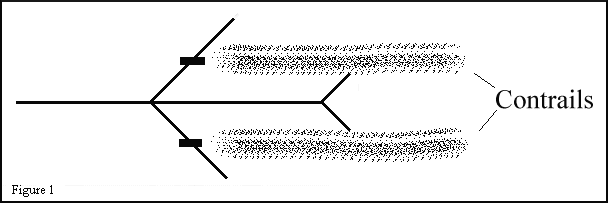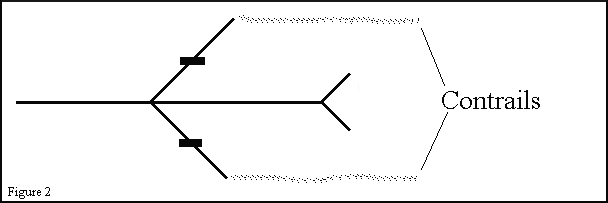Welcome to DU!
The truly grassroots left-of-center political community where regular people, not algorithms, drive the discussions and set the standards.
Join the community:
Create a free account
Support DU (and get rid of ads!):
Become a Star Member
Latest Breaking News
Editorials & Other Articles
General Discussion
The DU Lounge
All Forums
Issue Forums
Culture Forums
Alliance Forums
Region Forums
Support Forums
Help & Search
Environment & Energy
Related: About this forumACS: Fueling greener aviation with hydrogen
https://www.acs.org/pressroom/presspacs/2024/november/fueling-greener-aviation-with-hydrogen.htmlFueling greener aviation with hydrogen
PressPacs November 1, 2024
FOR IMMEDIATE RELEASE
“Challenges of Decarbonizing Aviation via Hydrogen Propulsion: Technology Performance Targets and Energy System Trade-Offs”
ACS Sustainable Chemistry & Engineering
Despite ongoing efforts to curb CO₂ emissions with electric and hybrid vehicles, other forms of transportation remain significant contributors of greenhouse gases. To address this issue, old technologies are being revamped to make them greener, such as the reintroduction of sailing vessels in shipping and new uses for hydrogen in aviation. Now, researchers reporting in ACS Sustainable Chemistry & Engineering have used computer modeling to study the feasibility and challenges of hydrogen-powered aviation.
“While there is a long way to go for hydrogen aviation to be realized at scale, we hope that our analysis of both onboard system design and enabling infrastructure will be used to prioritize development efforts,” says Dharik Mallapragada, one of the study’s coauthors.
The aviation industry’s energy-related CO₂ emissions have grown faster than those of rail, road and shipping in recent decades, according to the International Energy Agency. To reduce the potential climate impacts of this growth, scientists are improving aircraft design and operation, and developing low-emission fuels such as hydrogen, which is used for direct combustion or to power electric fuel cells. Hydrogen’s appeal as a fuel source is that its use produces no CO₂ and provides more energy per pound than jet fuel. To understand the potential impact of switching from traditional jet fuel to hydrogen fuel in aviation, Anna Cybulsky, Mallapragada and colleagues modeled its use in the electrification of regional and short-range turboprop aircraft.
The researchers calculated that the extra bulk of a hydrogen fuel tank and fuel cells retrofitted to an existing plane would need to be offset by weight reductions elsewhere, such as reducing the aircraft’s payload (cargo or passengers). This could mean that more flights would be needed to deliver the same payload. The team’s model suggested, however, that improvements in fuel cell power and the fuel system’s gravimetric index (the weight of the fuel in relation to the weight of the full fuel tank) could eliminate the need to reduce payload, thus eliminating the environmental impact of additional flights. At the same time, they noted that shifting to hydrogen-powered flight may reduce the aviation industry’s CO₂ emissions by up to 90%.
…
http://dx.doi.org/10.1021/acssuschemeng.4c02868PressPacs November 1, 2024
FOR IMMEDIATE RELEASE
“Challenges of Decarbonizing Aviation via Hydrogen Propulsion: Technology Performance Targets and Energy System Trade-Offs”
ACS Sustainable Chemistry & Engineering
Despite ongoing efforts to curb CO₂ emissions with electric and hybrid vehicles, other forms of transportation remain significant contributors of greenhouse gases. To address this issue, old technologies are being revamped to make them greener, such as the reintroduction of sailing vessels in shipping and new uses for hydrogen in aviation. Now, researchers reporting in ACS Sustainable Chemistry & Engineering have used computer modeling to study the feasibility and challenges of hydrogen-powered aviation.
“While there is a long way to go for hydrogen aviation to be realized at scale, we hope that our analysis of both onboard system design and enabling infrastructure will be used to prioritize development efforts,” says Dharik Mallapragada, one of the study’s coauthors.
The aviation industry’s energy-related CO₂ emissions have grown faster than those of rail, road and shipping in recent decades, according to the International Energy Agency. To reduce the potential climate impacts of this growth, scientists are improving aircraft design and operation, and developing low-emission fuels such as hydrogen, which is used for direct combustion or to power electric fuel cells. Hydrogen’s appeal as a fuel source is that its use produces no CO₂ and provides more energy per pound than jet fuel. To understand the potential impact of switching from traditional jet fuel to hydrogen fuel in aviation, Anna Cybulsky, Mallapragada and colleagues modeled its use in the electrification of regional and short-range turboprop aircraft.
The researchers calculated that the extra bulk of a hydrogen fuel tank and fuel cells retrofitted to an existing plane would need to be offset by weight reductions elsewhere, such as reducing the aircraft’s payload (cargo or passengers). This could mean that more flights would be needed to deliver the same payload. The team’s model suggested, however, that improvements in fuel cell power and the fuel system’s gravimetric index (the weight of the fuel in relation to the weight of the full fuel tank) could eliminate the need to reduce payload, thus eliminating the environmental impact of additional flights. At the same time, they noted that shifting to hydrogen-powered flight may reduce the aviation industry’s CO₂ emissions by up to 90%.
…
InfoView thread info, including edit history
TrashPut this thread in your Trash Can (My DU » Trash Can)
BookmarkAdd this thread to your Bookmarks (My DU » Bookmarks)
5 replies, 257 views
ShareGet links to this post and/or share on social media
AlertAlert this post for a rule violation
PowersThere are no powers you can use on this post
EditCannot edit other people's posts
ReplyReply to this post
EditCannot edit other people's posts
Rec (2)
ReplyReply to this post
5 replies
 = new reply since forum marked as read
Highlight:
NoneDon't highlight anything
5 newestHighlight 5 most recent replies
= new reply since forum marked as read
Highlight:
NoneDon't highlight anything
5 newestHighlight 5 most recent replies
ACS: Fueling greener aviation with hydrogen (Original Post)
OKIsItJustMe
Nov 3
OP
RussellCattle
(1,760 posts)1. I wonder how the use of hydrogen in aircraft, as a fuel or in fuel cells to produce electrical power as the article....
......states, would affect the vapor trails that jet aircraft leave behind, as these trails have been evaluated for their effect on global warming. Crazy, huh? Unintended consequences?
OKIsItJustMe
(20,733 posts)3. What's a contrail?
https://www.weather.gov/bgm/WeatherInActionContrails#:~:text=Condensation%20trails%2C%20commonly%20called%20contrails,vapor%20pressure%20at%20low%20temperatures
https://www.albany.edu/news-center/news/2024-ualbany-atmospheric-scientist-partners-study-factors-behind-contrail
A hydrogen powered plane will produce water vapor, but a standard jet engine produces water vapor as well.
https://www.bbc.com/news/business-58769351
Now, if it were up to me, there would be many fewer airliners flying, but (thankfully) it’s not up to me.
Weather In Action: Contrails

Condensation trails, commonly called contrails, are narrow cirrus cloud streamers that form behind high flying aircraft. Contrails are formed by two basic processes. The first method of formation relies on hot and humid engine exhaust mixing with air of low vapor pressure at low temperatures. As the added moisture and particulate matter from the exhaust mixes with the cold air, condensation occurs and the streamer is born (Figure 1). These types of contrails are sometimes called exhaust trails.

The second method of formation occurs when an airplane flies through air that is clear but has a relative humidity near 100 percent. The pressure change generated by the air flow over the wing tip causes a reduction in temperature and results in complete saturation of the air. The turbulent vortex generated by the wing tip completes the process and a contrail is generated behind the wing tips (Figure 2). These contrails are not as pronounced as those formed by engine exhaust and are comparatively rare. Contrails formed by this process are sometimes called aerodynamic trails.

Under the right conditions contrails can persist for a prolonged period of time and sometimes evolve into a complete layer of cirrus. Contrails that become large enough can occasionally be seen by satellite. In the satellite picture below several contrails are visible embedded in a thin patch of cirrus near the Virginia/North Carolina border on January 26, 2001. Some transverse banding is also present in the patch of cirrus. The contrails can be distinguished from the parallel transverse bands because they are at irregular angles and intersect the transverse bands.


Condensation trails, commonly called contrails, are narrow cirrus cloud streamers that form behind high flying aircraft. Contrails are formed by two basic processes. The first method of formation relies on hot and humid engine exhaust mixing with air of low vapor pressure at low temperatures. As the added moisture and particulate matter from the exhaust mixes with the cold air, condensation occurs and the streamer is born (Figure 1). These types of contrails are sometimes called exhaust trails.

The second method of formation occurs when an airplane flies through air that is clear but has a relative humidity near 100 percent. The pressure change generated by the air flow over the wing tip causes a reduction in temperature and results in complete saturation of the air. The turbulent vortex generated by the wing tip completes the process and a contrail is generated behind the wing tips (Figure 2). These contrails are not as pronounced as those formed by engine exhaust and are comparatively rare. Contrails formed by this process are sometimes called aerodynamic trails.

Under the right conditions contrails can persist for a prolonged period of time and sometimes evolve into a complete layer of cirrus. Contrails that become large enough can occasionally be seen by satellite. In the satellite picture below several contrails are visible embedded in a thin patch of cirrus near the Virginia/North Carolina border on January 26, 2001. Some transverse banding is also present in the patch of cirrus. The contrails can be distinguished from the parallel transverse bands because they are at irregular angles and intersect the transverse bands.

https://www.albany.edu/news-center/news/2024-ualbany-atmospheric-scientist-partners-study-factors-behind-contrail
UAlbany Atmospheric Scientist Partners to Study Factors Behind Contrail Formation
By Mike Nolan
ALBANY, N.Y. (Oct. 31, 2024) — From the development of new materials that make airplanes lighter to the exploration of alternative fuels, the aviation industry is making strides toward reducing its carbon footprint.
One aspect of flights that is surprisingly bad for the environment is contrails, the long, thin clouds that form behind jet aircraft as they fly through the sky.
…
“Soot particles, formed during fuel combustion inside aircraft engines, are known to dominate the formation of contrail ice particles,” Yu said. “As the aviation industry moves toward sustainable fuels and new engine technologies, soot emissions are being significantly reduced and volatile particles formed in engine exhaust plumes (after emission) become important to analyze.”
…
“Our research indicates that volatile particles can contribute to the number of ice particles in a contrail at medium levels of soot emissions and average temperatures in the air, extending the ranges of conditions when these particles become a factor,” Yu said. “This is important as we assess the climate impact of contrails, both during current flights and for future more sustainable ones.”
…
Hydrogen powered aircraft should not produce soot (the primary cause of contrails) or volatile particles. Since they are flying through the air, they may still produce “aerodynamic trails,” but these can be mitigated by adjusting the flight of the airplane.
By Mike Nolan
ALBANY, N.Y. (Oct. 31, 2024) — From the development of new materials that make airplanes lighter to the exploration of alternative fuels, the aviation industry is making strides toward reducing its carbon footprint.
One aspect of flights that is surprisingly bad for the environment is contrails, the long, thin clouds that form behind jet aircraft as they fly through the sky.
…
“Soot particles, formed during fuel combustion inside aircraft engines, are known to dominate the formation of contrail ice particles,” Yu said. “As the aviation industry moves toward sustainable fuels and new engine technologies, soot emissions are being significantly reduced and volatile particles formed in engine exhaust plumes (after emission) become important to analyze.”
…
“Our research indicates that volatile particles can contribute to the number of ice particles in a contrail at medium levels of soot emissions and average temperatures in the air, extending the ranges of conditions when these particles become a factor,” Yu said. “This is important as we assess the climate impact of contrails, both during current flights and for future more sustainable ones.”
…
A hydrogen powered plane will produce water vapor, but a standard jet engine produces water vapor as well.
https://www.bbc.com/news/business-58769351
Contrails: How tweaking flight plans can help the climate
22 October 2021
Beth Timmins
Business reporter, BBC News
Those wispy white lines that crisscross the skies after an aeroplane flies overhead are far less benign than their fluffy patterns might suggest.
…
Contrails: What changes might help?
Dr Marc Stettler, transport and environment lecturer at Imperial College London, says changing the altitude of fewer than 2% of flights could potentially reduce contrail-linked climate change by a staggering 59%. "Tweaking the flight elevation by just a thousand feet can stop some contrails from forming," he explains.
…
"Our results have been really positive. We were able to predict and avoid around 80% of the contrails with little cost," she says. Prof Voigt adds that very few flights would have to be deviated to win a "large climate impact".
…
22 October 2021
Beth Timmins
Business reporter, BBC News
Those wispy white lines that crisscross the skies after an aeroplane flies overhead are far less benign than their fluffy patterns might suggest.
…
Contrails: What changes might help?
- Adjust flight routes so aircraft can avoid areas where they form
- Teach pilots about new flight plans to avoid contrails
- Introduce a contrails tax, and give airlines a refund if their flights are contrail-free
Dr Marc Stettler, transport and environment lecturer at Imperial College London, says changing the altitude of fewer than 2% of flights could potentially reduce contrail-linked climate change by a staggering 59%. "Tweaking the flight elevation by just a thousand feet can stop some contrails from forming," he explains.
…
"Our results have been really positive. We were able to predict and avoid around 80% of the contrails with little cost," she says. Prof Voigt adds that very few flights would have to be deviated to win a "large climate impact".
…
Now, if it were up to me, there would be many fewer airliners flying, but (thankfully) it’s not up to me.
4th
(57 posts)2. Sounds good, but it depends on how the hydrogen is manufactured. n/t
OKIsItJustMe
(20,733 posts)4. Um... right...
For example, Airbus is doing a lot of work on hydrogen-powered flight.
https://www.airbus.com/en/newsroom/stories/2024-09-developing-a-global-ecosystem-to-support-hydrogen-powered-flight
02 September 2024
Developing a global ecosystem to support hydrogen-powered flight
Preparations on the ground to bring ZEROe to the skies
Airbus aims for hydrogen-powered aircraft to enter into service by 2035. While the engineering progress necessary to make this a reality is well underway, there is a second and equally pivotal half of development that must advance in tandem: the creation of a global hydrogen ecosystem.
The argument for hydrogen
Hydrogen is one of the most promising energy sources we have to decarbonise industrial processes. It produces little to no carbon dioxide emissions when used, and when made from renewable energy – known as green hydrogen – its carbon footprint is practically zero.
The cost of green hydrogen is expected to significantly decline as large-scale production accelerates to meet the growing decarbonisation needs of many different industries, applications and usages worldwide. Independent forecasts from the International Energy Agency (IEA), International Renewable Energy Agency (IRENA), and McKinsey predict that cross-industry scale-up will significantly reduce costs.
Indeed, renewable hydrogen will likely be a key factor in decarbonising many industries in the coming decades. But it has a particularly important role to play in helping the aviation industry reach its goal of achieving net-zero CO₂ emissions by 2050. Hydrogen has a specific energy-per-unit mass that is three times higher than traditional jet fuel, making it a much more effective decarbonised energy source than batteries, for example.
…
Developing a global ecosystem to support hydrogen-powered flight
Preparations on the ground to bring ZEROe to the skies
Airbus aims for hydrogen-powered aircraft to enter into service by 2035. While the engineering progress necessary to make this a reality is well underway, there is a second and equally pivotal half of development that must advance in tandem: the creation of a global hydrogen ecosystem.
The argument for hydrogen
Hydrogen is one of the most promising energy sources we have to decarbonise industrial processes. It produces little to no carbon dioxide emissions when used, and when made from renewable energy – known as green hydrogen – its carbon footprint is practically zero.
The cost of green hydrogen is expected to significantly decline as large-scale production accelerates to meet the growing decarbonisation needs of many different industries, applications and usages worldwide. Independent forecasts from the International Energy Agency (IEA), International Renewable Energy Agency (IRENA), and McKinsey predict that cross-industry scale-up will significantly reduce costs.
Indeed, renewable hydrogen will likely be a key factor in decarbonising many industries in the coming decades. But it has a particularly important role to play in helping the aviation industry reach its goal of achieving net-zero CO₂ emissions by 2050. Hydrogen has a specific energy-per-unit mass that is three times higher than traditional jet fuel, making it a much more effective decarbonised energy source than batteries, for example.
…
Caribbeans
(975 posts)5. Ever seen an electrolyzer this big?


While many westerners ridicule and scoff at China's H2 efforts (those that even know about it) they are in the process of literally owning the H2 industry. One might think the US would have learned from the way they took over the solar industry but...